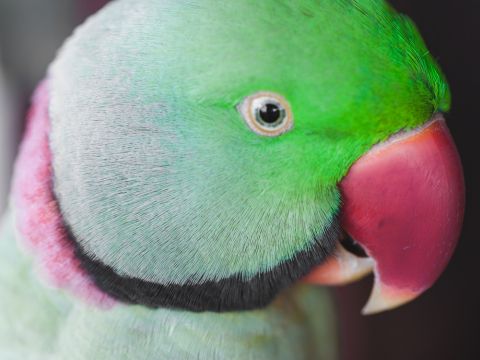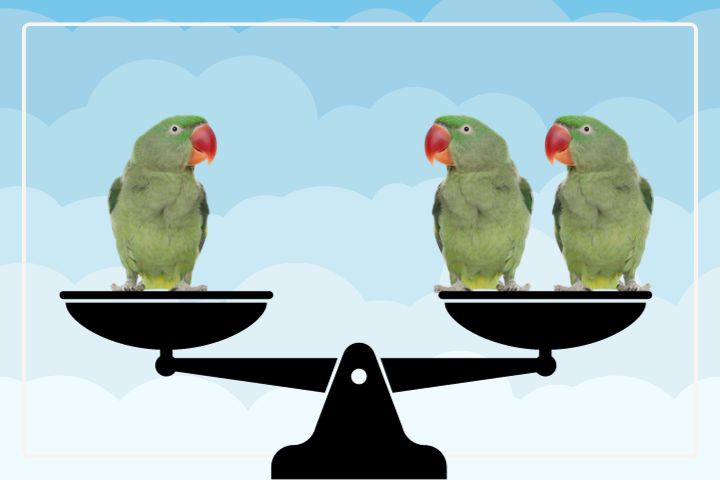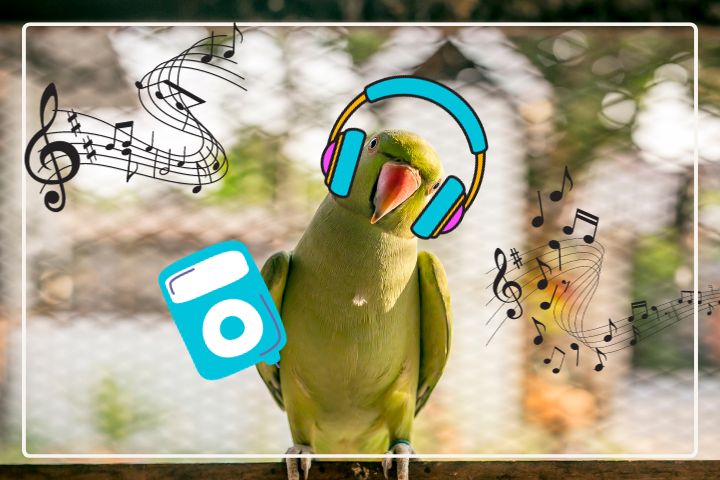What Are the Different Colors of Indian Ringnecks?
Ringnecks are a popular type of parrot known for their wide range of vivid colors and distinctive features. These birds are native to Asia and Africa and have become a popular pet for bird enthusiasts around the world. One of the most fascinating aspects of ringnecks is their wide range of colors, which can vary from bright greens and blues to muted grays and yellows.
The most common color for ringnecks is bright green, which is the natural color of these parrots found in the wild. However, there are many other colors that ringnecks can come in, including blue, yellow, gray, and white. Some ringnecks even have multiple colors on their feathers, creating a beautiful and unique pattern.
Read our article on the Overview, Characteristics and Care of Indian Ringneck Parakeets
Common Ringneck Colors
Indian Ringnecks are known for their vibrant and colorful plumage. The most common and traditional color of Indian Ringnecks is green, which is the natural color of these parrots found in the wild. The green plumage typically features a bright lime or emerald shade that covers most of the body, with a lighter green or yellowish tint on the head and neck.
Apart from the green color, Indian Ringnecks also come in a variety of other colors like yellow, albino, cinnamon, and lutino. Yellow is a common mutation that occurs in Indian Ringnecks, and these birds have a yellowish-green plumage with a yellow head and neck.

Albino Indian Ringnecks are another common mutation, and these birds have a pure white plumage with red eyes.
Cinnamon Indian Ringnecks are a rare mutation, and these birds have a brownish-red plumage with cinnamon-colored wings.
Lutino Indian Ringnecks are another popular mutation, and these birds have a yellow plumage with a red beak and red eyes.
In addition to these common mutations, Indian Ringnecks can also come in a variety of other colors like blue, turquoise, violet, and gray. These colors are less common than the green and yellow mutations, but they are still found in Indian Ringnecks.
Ringnecks are a colorful and beautiful species of parrots that come in a variety of different colors. Whether you prefer the traditional green color or one of the many mutations, there is sure to be an Indian Ringneck that catches your eye.
Distinctive Features of Indian Ringnecks
Ringnecks are known for their distinctive and striking features that make them stand out from other parrots. One of the most recognizable features is the ring around their neck, which is more pronounced in males than in females. Males have a black ring around their neck, while females have either a lightly colored ring or no ring at all.

In addition to the ring around their neck, ringnecks typically have three shades of color on their tail feathers, which add to their overall beauty. They also have yellow and orange rings around their eyes that make their eyes stand out. These markings are more pronounced in males than in females.
Selective breeding programs have given rise to a number of beautiful color mutations within the species. These mutations include different colors around their necks, such as pink rings or black rings, which make them even more unique and eye-catching.
Understanding the different colors of ringnecks can be useful in identifying their genetic background and overall health. Eye color can also be an indicator of their color variant, with certain variants exhibiting distinctive pink or red eyes. It is important to note that while there are many different color mutations, not all of them are recognized by breeders or bird organizations.
Color Mutations in Ringnecks
Ringneck parrots are known for their beautiful and vibrant colors. While the typical coloring of this species is bright lime green with blue tail feathers and yellow under the wings, there are several color mutations that can occur. These mutations can occur in both male and female birds, and will determine the color of their offspring.
Here are some of the different color mutations that can occur in ringneck parrots:
- Blue Mutation: This mutation results in a blue-colored bird, and is caused by a recessive gene. Birds with this mutation will have a blue body with a white head and pink feet.
- Lutino Mutation: This mutation results in a yellow-colored bird, and is caused by a sex-linked gene. Birds with this mutation will have a yellow body with a white head and pink feet.
- Grey Mutation: This mutation results in a grey-colored bird, and is caused by a dominant gene. Birds with this mutation will have a grey body with a white head and pink feet.
- Albino and Pied Mutations: These mutations are caused by a lack of pigmentation in the bird’s feathers. Albino birds will have red eyes and white feathers, while pied birds will have a mixture of white and colored feathers.

It’s important to note that most ringneck parrots in captivity are split to a mutation and may be able to produce mutation-colored young, even if they don’t show the color themselves.
The color of the male and female bird will determine the color of their offspring. For example, if a blue male bird mates with a green female bird that is split to blue, their offspring will have a 50% chance of being blue and a 50% chance of being green split to blue.
Frequently Asked Questions
How many colors of Indian Ringneck parrots are there?
Indian Ringneck parrots come in a wide range of colors, including green, blue, yellow, white, gray, turquoise, and violet. There are over 36 different color mutations of Indian Ringneck parrots, with more being discovered all the time.
What are the different colors of Indian Ringneck parrots?
The most common color of Indian Ringneck parrots is green, which is the natural color of these parrots found in the wild. Other colors include blue, yellow, white, gray, turquoise, and violet. Each color can come in different shades and patterns, making each Indian Ringneck parrot unique.
What are the most common Indian Ringneck parrot mutations?
The most common Indian Ringneck parrot mutations include blue, lutino, albino, cinnamon, and pied. These mutations can occur in different combinations, resulting in a wide range of colors and patterns.
Which Indian Ringneck parrot color is the most popular?
Green is the most popular Indian Ringneck parrot color, as it is the natural color of these parrots found in the wild. However, other colors such as blue, yellow, and lutino are also popular among pet owners.
What is the rarest Indian Ringneck parrot color?
The rarest Indian Ringneck parrot color is the black-capped mutation, which is a combination of blue and gray colors. This mutation is extremely rare and highly sought after by collectors.
What is the average price of Indian Ringneck parrots based on their color?
The price of Indian Ringneck parrots can vary based on their color, with rarer colors typically commanding a higher price. On average, Indian Ringneck parrots can cost anywhere from $250 to $2,500 and up, with prices varying based on factors such as color, age, and temperament.
Click here to read about where to purchase Ringneck Parakeets
Conclusion
Indian Ringnecks are a beautiful and popular species of parrot that come in a variety of colors. The most common and traditional color of Indian Ringnecks is green, which is the natural color of these parrots found in the wild. The green plumage typically features a bright lime or emerald shade that covers most of the body, with a lighter green or yellowish tint on the head and neck.
However, selective breeding programs have given rise to a number of beautiful color mutations within the species. These mutations include blue, yellow, white, grey, and even albino variations. Blue Indian Ringnecks have a blue body and wings with a grey head and neck, while yellow Indian Ringnecks have a yellow body and wings with a green head and neck. White Indian Ringnecks have a pure white body and wings with a light grey head and neck, and grey Indian Ringnecks have a grey body and wings with a darker grey head and neck.
It is important to note that the color of an Indian Ringneck can vary depending on its age, sex, and diet. Additionally, some color mutations may be more rare or difficult to find than others. When considering adding an Indian Ringneck to your family, it is important to do your research and choose a reputable breeder or adopt from a reputable rescue organization.
Overall, Indian Ringnecks are a wonderful addition to any bird lover’s home, with their vibrant colors and playful personalities.








I wanted to draft you the little observation to help say thanks a lot once again about the unique tips you’ve discussed in this case. This has been certainly wonderfully generous with people like you to convey extensively all that a lot of people might have supplied for an electronic book to end up making some cash on their own, most notably now that you might have done it in the event you desired. Those strategies also served like the good way to recognize that most people have similar keenness similar to my very own to realize a good deal more pertaining to this condition. Certainly there are some more fun opportunities in the future for many who go through your blog post.